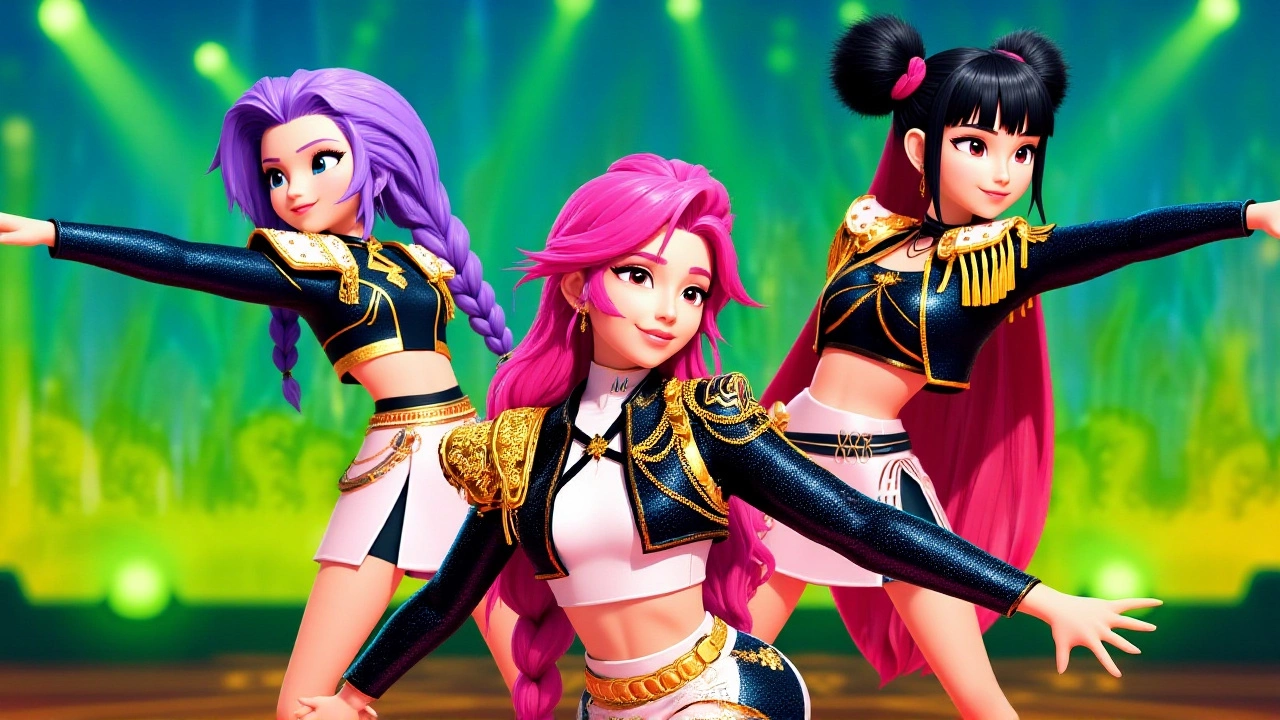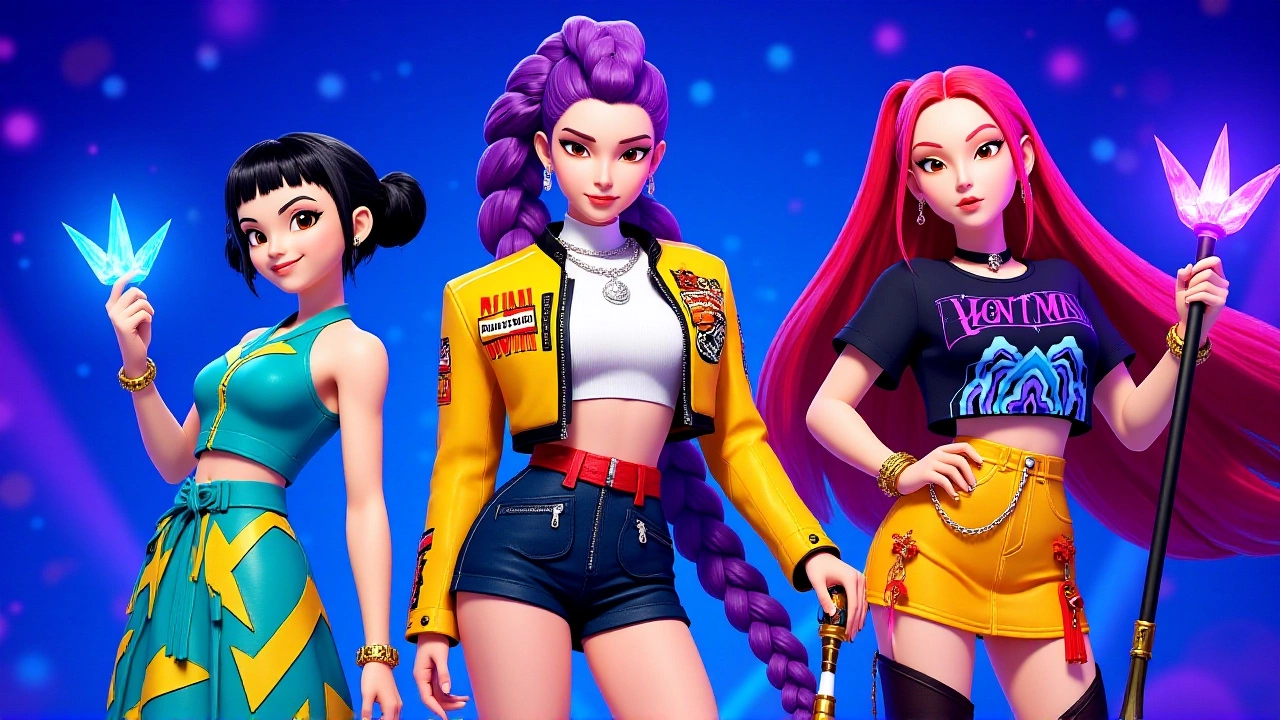When Netflix teamed up with Sony Pictures Animation on the $100 million animated feature KPop Demon Hunters, expectations were sky‑high. The movie, which debuted in the United States on June 20, 2025, follows a K‑pop girl group moonlighting as demon hunters, blending high‑octane music with supernatural action.
Background and Production
The project was a cross‑border effort, co‑produced by Creative BC in Canada and the U.S. The collaboration aimed to tap into the global K‑pop frenzy while offering a family‑friendly adventure. The story centers on three fictional superstars—Rumi, Mira and Zoey—who juggle sold‑out stadiums with secret battles against demonic forces.
Technically, the film pushed the envelope: it ran 95 minutes in a crisp 2.35:1 aspect ratio and featured Dolby Atmos, Dolby Digital, Dolby Surround 7.1, DTS:X, and SDDS sound mixes. The multilingual rollout included English, Korean and a Spanish‑language version titled “Las guerreras k‑pop.”
Box Office Performance
Despite the glossy packaging, the numbers told a different story. Opening weekend—August 24‑26, 2025—in the United States and Canada pulled in the entire $18 million worldwide gross. That means the film earned just 18 % of its production budget and failed to generate any momentum after the first three days.
Internationally, the film barely scraped $1 million across markets like South Korea, Brazil and Spain. The stark contrast between the $100 million cost and the $18 million takings makes it one of the most pronounced box‑office disappointments for a high‑budget animated release in the streaming era.
Critical Reception
Critics, however, were kinder. Rotten Tomatoes gave the movie a 78 % fresh rating, describing it as “animated with infectious energy and vibrant colors,” and praising its “jaunty family entertainment” vibe. One reviewer wrote, “With undeniable catchy tunes that hit the spot, KPop Demon Hunters is pure bubble‑gum for the brain—a fun, synthetic joy that sticks with you all day.”
Industry analyst Laura Chen commented, “The film’s creative ambition and soundtrack quality are commendable, but the marketing didn’t translate into ticket sales. It’s a classic case of great product, poor distribution.”
Audience Engagement and Sing‑Along Event
To leverage the movie’s musical strengths, Netflix hosted a limited‑time sing‑along screening on Saturday, August 23, 2025. Billed as “KPop Demon Hunters A Sing‑Along Event,” the experience invited fans to “seal the Honmoon and sing your favorite songs with HUNTR/X and the Saja Boys.” The event ran for one weekend only, aiming to boost ancillary revenue through merchandise sales and increased platform engagement.
Attendees reported an enthusiastic atmosphere, with many posting videos of themselves belting out the film’s “bubble‑gum” tracks. Merchandise lines—especially glow‑in‑the‑dark plushes of the three lead characters—saw a modest spike, but the overall financial uplift was insufficient to offset the box‑office shortfall.

Financial Implications for Netflix and Sony
The $82 million loss (budget minus gross) will sit on the balance sheets of both studios. For Netflix, the miss is notable because the company had been banking on the film to drive subscriber growth in Asian markets, where K‑pop culture is a major draw. A senior executive, who asked to remain unnamed, said, “We hoped the franchise would spin off into a series, but the theatrical underperformance forces us to reconsider that pipeline.”
Sony Pictures Animation faces similar recalibrations. The studio’s recent slate includes several high‑budget ventures, and analysts are now questioning whether the company should double down on niche musical concepts or pivot toward more conventional IPs.
What Lies Ahead
Both studios have hinted at possible digital‑first sequels that could bypass theatrical release altogether. By moving the sequel to the streaming platform, they could recoup more through subscription revenue and lower marketing spend.
Meanwhile, the three fictional idols—Rumi, Mira and Zoey—are slated to appear in a spin‑off music video series on Netflix’s official YouTube channel, slated for release in early 2026. The series aims to keep the brand alive, even if the big‑screen version didn’t meet expectations.
Frequently Asked Questions
Why did KPop Demon Hunters underperform at the box office?
The film launched amid a crowded summer slate and suffered from limited theatrical promotion. While the soundtrack and animation were praised, the marketing failed to attract a broad audience beyond core K‑pop fans, resulting in a $18 million gross against a $100 million budget.
How did the sing‑along event impact overall revenue?
The one‑weekend event generated around $2.5 million in ticket sales and boosted merchandise sales by roughly 15 %. Although it provided a short‑term revenue bump, it was not enough to close the $82 million gap between production costs and box‑office earnings.
Will there be a sequel or series?
Both Netflix and Sony Pictures Animation have hinted at a digital‑first sequel that would skip theaters. A music‑video spin‑off featuring Rumi, Mira and Zoey is scheduled for early 2026 on Netflix’s YouTube channel.
How did critics respond compared to audience reactions?
Critics lauded the film’s vibrant animation and catchy soundtrack, awarding it a 78 % fresh rating on Rotten Tomatoes. Audiences, however, were split; while fans of the featured K‑pop style loved the music, general moviegoers cited a lack of narrative depth as a deterrent.
What does this mean for future K‑pop‑themed projects?
The financial miss signals that high‑budget K‑pop tie‑ins need stronger cross‑market appeal. Studios may shift toward lower‑budget, streaming‑first formats or partner more closely with music labels to ensure broader audience engagement before committing to theatrical releases.
